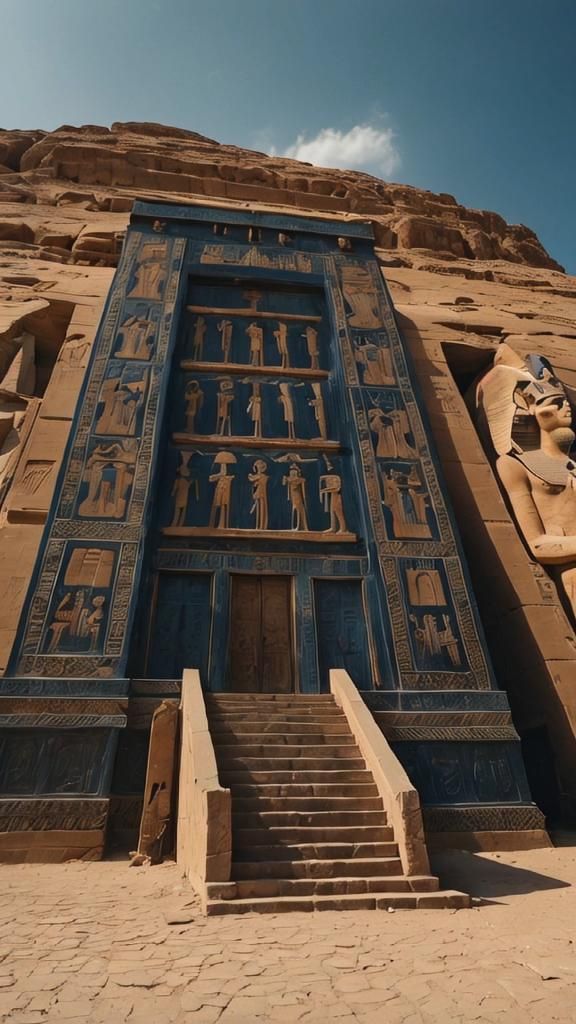Imagine walking through the threshold of a magnificent stone pylon, entering a world where every wall, column, and statue whispers tales of divinity and human ambition. I’m about to guide you through one of history’s most fascinating spiritual landscapes: the temples of Ancient Egypt.
These temples were not merely edifices of stone and mortar; they were the heartbeat of Egyptian civilization. They served as bridges between the mortal and the divine, ensuring the continued favor of the gods toward the land of the Nile. Their towering presence was a constant reminder of the pharaohs’ divine mandate and their pivotal role in maintaining cosmic balance.
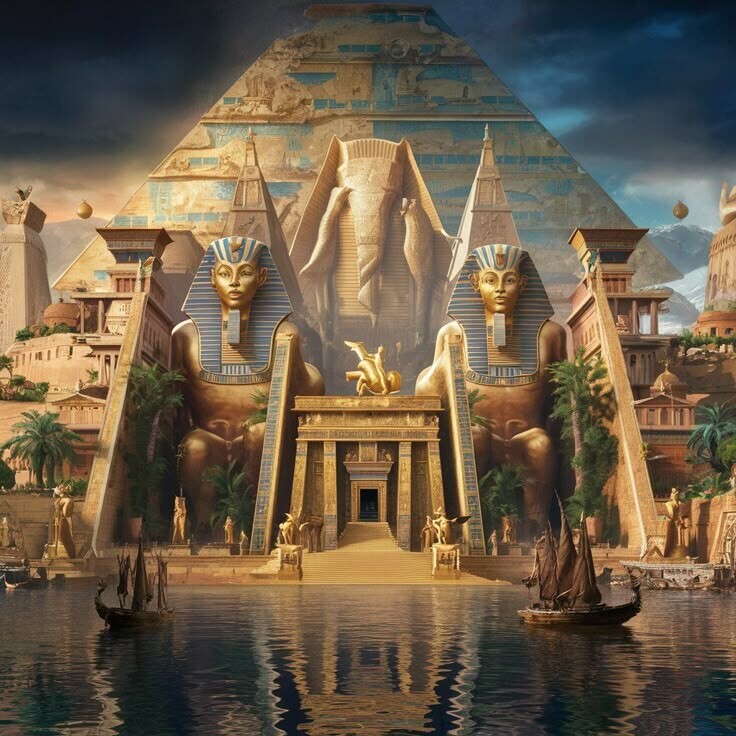
Within these sacred spaces, the gods were believed to reside on earth. Regular folks, peasants and nobles alike, looked to these sites as sources of divine blessings, prosperity, and wisdom. What’s more, these sanctuaries played an influential role beyond religious observances; they were integral to the economy, culture, and administration of the kingdom.
As we explore the temples’ enigmatic beauty, remember that beneath the grandeur lay a complex system of beliefs and practices aimed at sustaining the world’s order as the Egyptians understood it. Embarking to unwrap these mysteries isn’t just a tour of ancient landmarks; it’s an insight into an advanced civilization that shaped human history.
Read on as we delve into the divine blueprints of these structures in “The Divine Blueprint: Architectural Marvels of Worship”, the next section, where we’ll dissect the symbolic and physical elements that make Egyptian temples an undying source of wonder and amazement.
The Divine Blueprint: Architectural Marvels of Worship
When I imagine the ancient temples of Egypt, I see more than structures of limestone and sandstone; I see masterful designs that speak to an intimate connection between the earthly and the divine. These temples were conceived as the dwelling places of gods, and every architectural choice was steeped in symbolism and intention.
The grand entrances to these sacred sites were marked by pylons, monumental gateways that loomed over visitors. These pylons weren’t just impressive in their size; they were studded with carvings and symbols that told stories of gods, pharaohs, and the belief in an afterlife. As tall as they stood, they represented the horizon—where the earth meets the sky—reminding all of the cosmos’s ever-present nature in Egyptian life.

Beyond the towering pylons lay the courtyards, grand open spaces that could accommodate the masses during festive processions. Here, the public connected with the divine, participating in rituals and receiving blessings. The presence of the people in these spaces underscored the temples’ role as a bridge between gods and humans.
Another component, the hypostyle hall, was an awe-inspiring forest of pillars, each one carved with intricate hieroglyphics and devout imagery. This is where the architecture truly transports us to the ancients’ vision of the world’s creation, a space echoing the dense reeds of the primordial swamp from which life emerged according to their mythology.
The utmost sacred spot in a temple was the sanctuary. Hidden deep within, it housed the cult statue of the god or goddess—the centerpiece of worship and religious activity. Here, the divine was believed to reside, and access was restricted to only the highest priests and the pharaoh—those who mediated between the deities and the people.
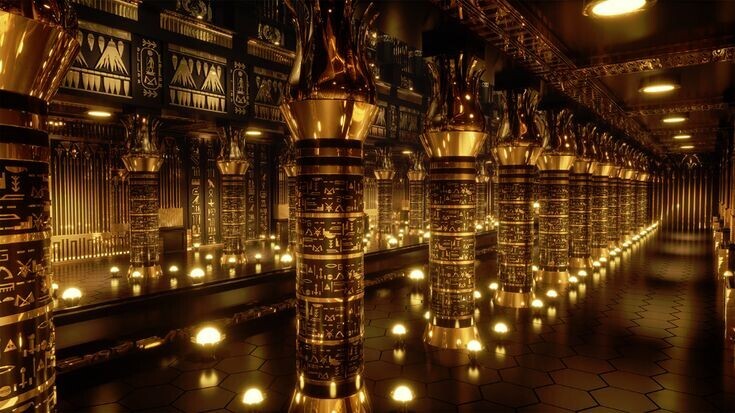
Surrounding it all were thick walls, whose towering presence served as both protection and demarcation. A temple’s walls made a clear distinction: within was the realm of order and holiness, beyond lay the mortal world. This separation underscores the ancient Egyptians’ respect for the sacred, ensuring that the entrance into the temple was also a passage into a consecrated world.
Understanding the layout and structure of these ancient temples is a journey into the Egyptian worldview—a worldview that revered the cosmos, cherished ritual, and believed in the enduring presence of the divine in every crafted stone. As a gateway to the next section, we will delve into the ethos of the landscapes that gave rise to the most iconic temples and their celestial guardians.
Stones of the Celestials: Major Temples and Their Gods
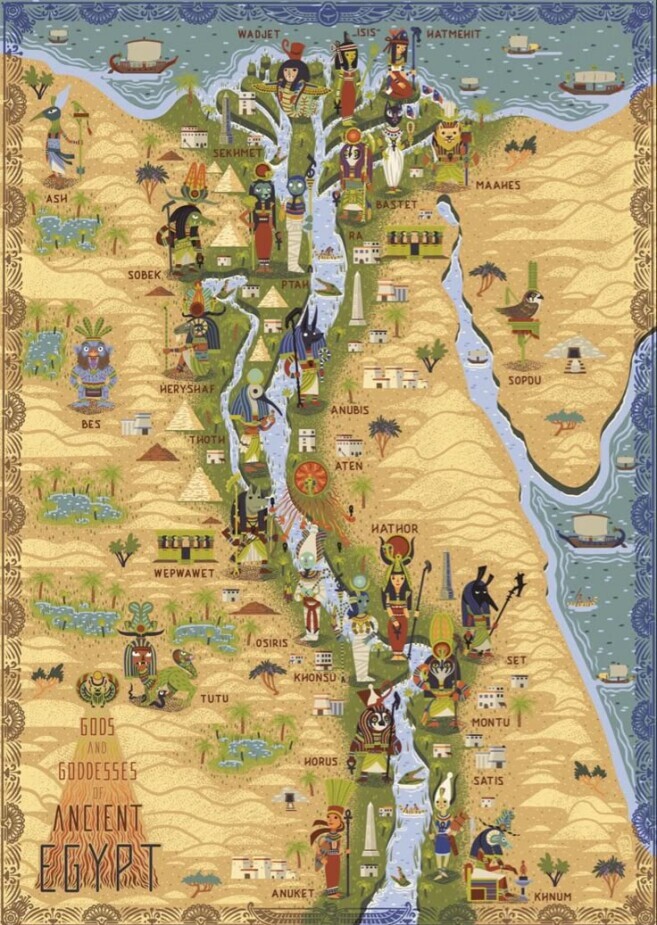
Ancient Egypt’s temples served not only as places of worship but also embodied the grandeur of their deities. Each stone was more than mere structure; it was a testament to the civilization’s reverence for its celestial guardians. Among the constellation of temples spread across the Nile Valley, a few stand tall in historical significance for their scale, design, and spiritual importance.
The Temple of Karnak, for instance, was not a single entity but a sprawling complex dedicated to Amun-Ra, the chief deity in the Egyptian pantheon. The scale is immense, a reflection of Amun-Ra’s supremacy and the temple’s central role in religious life. It features an astonishing forest of columns within its Hypostyle Hall, obelisks reaching for the heavens, and an accumulation of shrines and smaller temples, all standing as pillars of the ancient world.
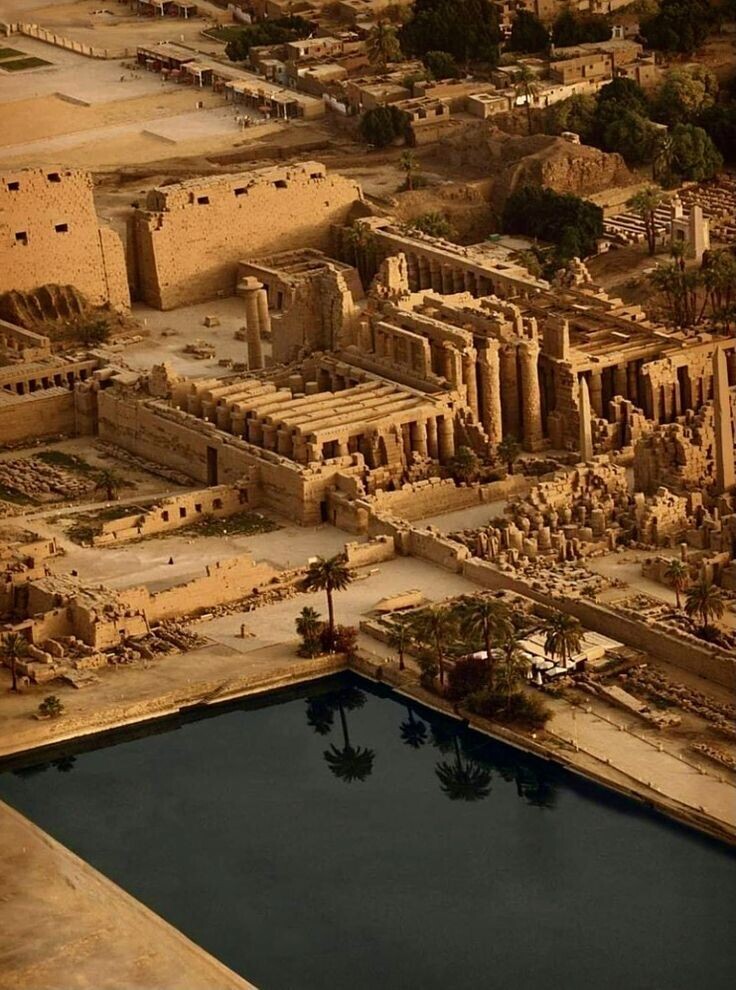
In contrast to Karnak’s expansiveness, the Temple of Luxor presents a more focused celebration of divinity. Integral to the Theban triad, it honored Amun, Mut, and Khonsu. The temple’s connection to Karnak through the Avenue of Sphinxes signified unification of the sacred landscape. During the Opet Festival, these paths thrummed with life, as processions mirrored the mythic journeys of gods and reinforced the pharaoh’s divine legitimacy.
Hewn from the living rock, the Temple of Hatshepsut at Deir el-Bahari stands in a league of its own. Commissioned by Egypt’s first female pharaoh, it perfectly blends with its natural surroundings, creating a sense of eternal serenity. The terraces and colonnades tell a story of divine ancestry and the pharaoh’s quest for immortality, all while serving as a testament to a groundbreaking reign.
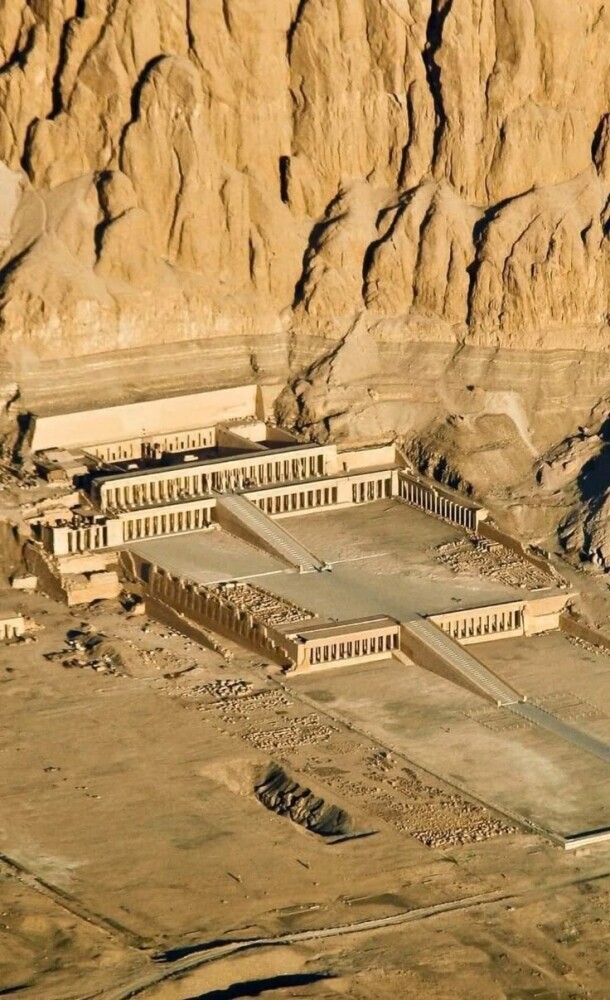
At the southern frontier, the Temples of Abu Simbel reflect the might of Pharaoh Ramses II. Carved into the mountainside, this dual temple complex venerates Ramses and his queen, Nefertari, aligning human and divine authority. Notably, during specific days of the year, the inner sanctum illuminates, and the alignment with the sunrays is a piece of architectural ingenuity that celebrates Ramses’s status as a god amongst men.
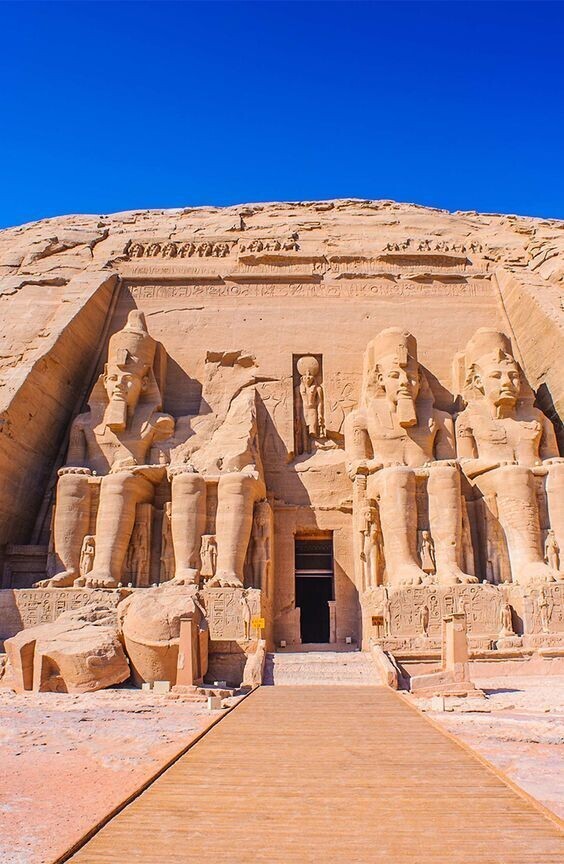
Echoes of the Divine: Rituals and Sacred Ceremonies
Religion pulsated through the heart of ancient Egyptian society, and rituals were the lifeblood that kept this spiritual heart beating. Each temple bore witness to an array of ceremonies tailored to honor its resident deities and ensure their favor upon the land.
At dawn, the temple would stir with activity as priests prepared for the “Opening of the Mouth” ceremony. They’d offer food, drink, and incense to ‘awaken’ the gods’ statues, believed to house their living essence. I imagine the scent of burning incense mingling with the first light as an intoxicating symbol of divine presence.
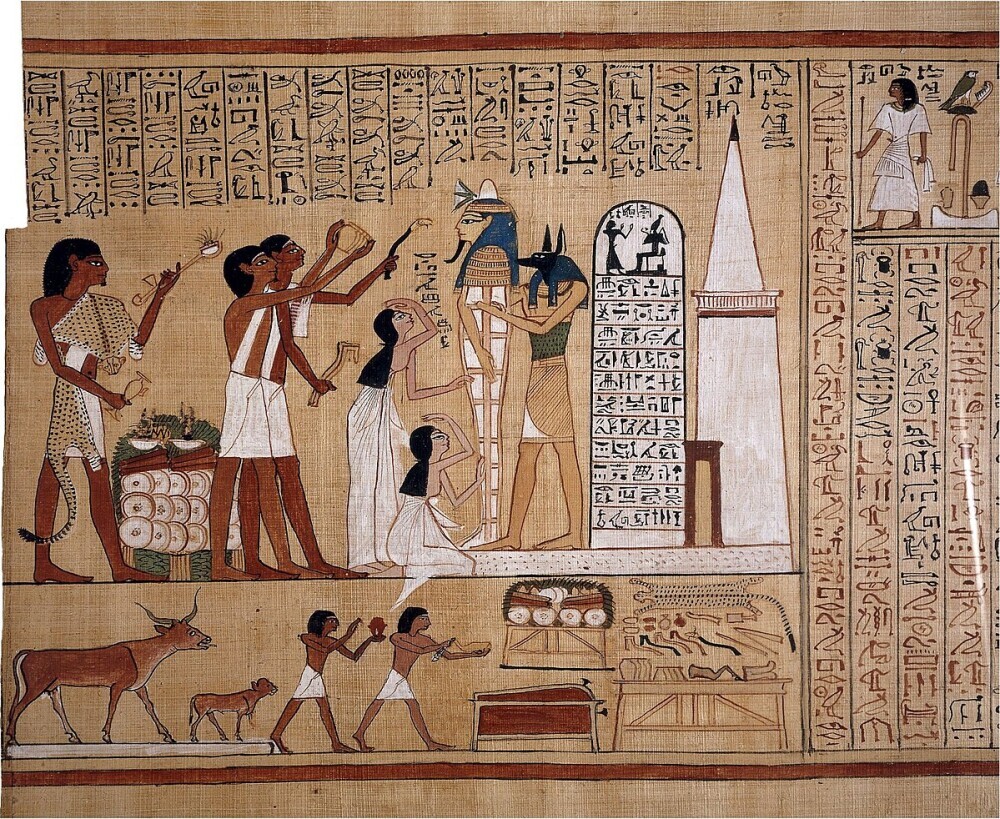
Ceremonial purity was paramount, with priests performing ablutions to cleanse themselves before approaching the sacred. They needed to be pure vessels, conduits between the divine and the mundane worlds. Walking through the temple after such rites would be akin to stepping into an arena of holiness, where every action and word held weight beyond the visible.
But it wasn’t all solemn rites and silent prayers. Festivals like the Opet Festival involved grand processions and vibrant celebrations that brought the community together in shared worship. It was during these festivals that the connection between the pharaoh, the gods, and the people was most publicly affirmed. Luxor, particularly, would have been abuzz during the Opet Festival, alive with the sounds of music, the sight of jubilant dances, and the collective hope for renewal and prosperity.
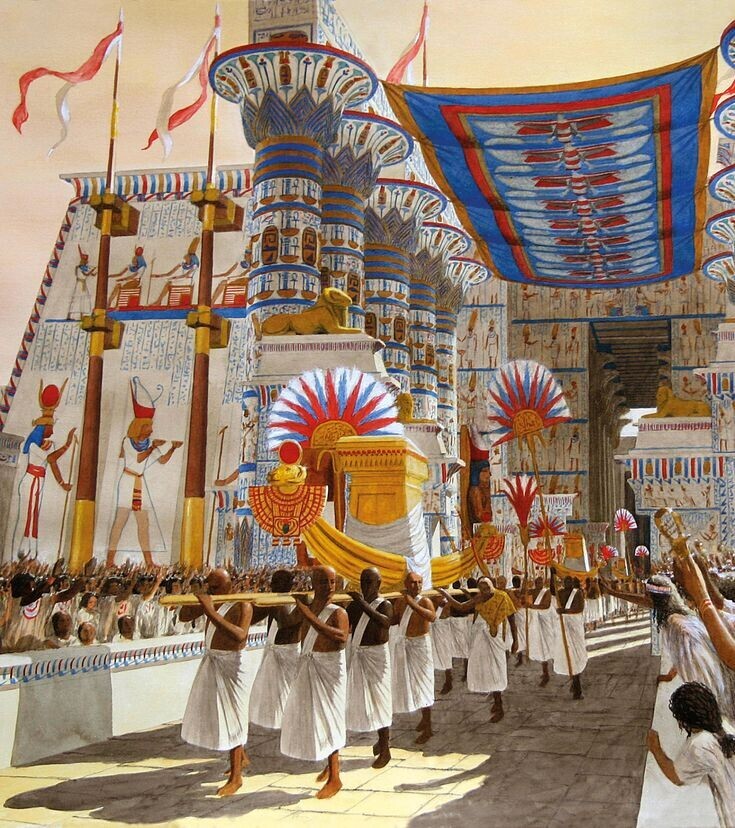
Temples also served as pivotal sites for divination. Oracular practices gave voice to the gods, with temple priests interpreting omens and proclamations. Such declarations could determine the outcome of battles, the succession of kings, or the bestowal of blessings upon the land. This divine guidance was sought regularly, indicating just how intertwined the lives of the Egyptians were with the will of their deities.
As days turned to night, and festivals came to their crescendo, the impact of these rituals lingered. They underpinned every aspect of Egyptian life, reinforcing the cosmic order and the pharaoh’s heavenly mandate. Their echoes can still be felt, leading us into the next chapter where we’ll discover who was behind orchestrating these elaborate ceremonies and managing the temples’ grandeur — the priesthood.
Ancestral Echoes: Artistic Expression in Holy Precincts
The temples of Ancient Egypt stand as testament to a civilization that valued beauty in its connection to the divine. Inside every temple, the convergence of art and religion is evident, with each wall, column, and statue telling a tale of the gods and pharaohs. These were not merely decorative elements; they served as a medium for documenting history, expressing religious ideology, and teaching future generations.
One can hardly talk about temple art without noting the reliefs and inscriptions that adorn these ancient walls. Craftsmen chiseled stories into stone, translating myths and divine victories into a visual language that has outlasted the civilization itself. The hieroglyphic inscriptions accompanying these reliefs provide scholars today with deep insights into the cultural and spiritual life of Ancient Egyptians.

The statues within these sacred halls were more than just symbols of power and piety. They were focal points for worship, where the essence of the deity or the pharaoh was believed to reside. These effigies, sometimes painted to mimic life, were pivotal in ritual practices, receiving offerings from the devout seeking favor or guidance.
But a temple’s cultural impact extended beyond its art. Libraries and scriptoriums housed within temple precincts preserved a wealth of knowledge. Here, ancient texts on astronomy, medicine, and mathematics were kept, turning temples into centers of learning and intellectual exchange.
This preservation of knowledge through teaching and record-keeping set the stage for the final piece of our exploration: Legacy Cast in Stone. As we transition into understanding the enduring impact of these magnificent structures, we’ll see how the temples’ artistic and educational contributions have become a cornerstone of our understanding of Ancient Egyptian culture.
Legacy Cast in Stone: Cultural Impact of Egyptian Temples
The temples of Ancient Egypt are more than mere relics of stone and sand; they are testimonies to an extraordinary civilization that understood the profound connection between the divine, the ruler, and the people. These monumental structures, through centuries, have acted as silent guardians of Egypt’s immense history, influencing not only the field of Egyptology but also inspiring modern architecture and culture.
As we gaze upon the remnants of these sacred sites today, we recognize how they have shaped our understanding of religious, economic, and administrative practices of the past. They are key to comprehending the Egyptians’ advanced astronomical knowledge and their dedication to the arts and learning.
Most importantly, the temples serve as a bridge connecting us to the lives of individuals who walked their cool stone floors thousands of years ago. It is in the shadows of these great edifices that we learn about the dreams, the reverences, and the daily lives of a people deeply invested in their relationship with the cosmos.
In concluding our exploration of the temples of Ancient Egypt, we are reminded that these gateways to the divine continue to call out to us across time, offering insights into a world where humanity and the gods once intersected. Their legacy, intricately carved and set in stone, ensures that the wisdom, artistry, and spirit of Ancient Egypt will endure for generations to come.

